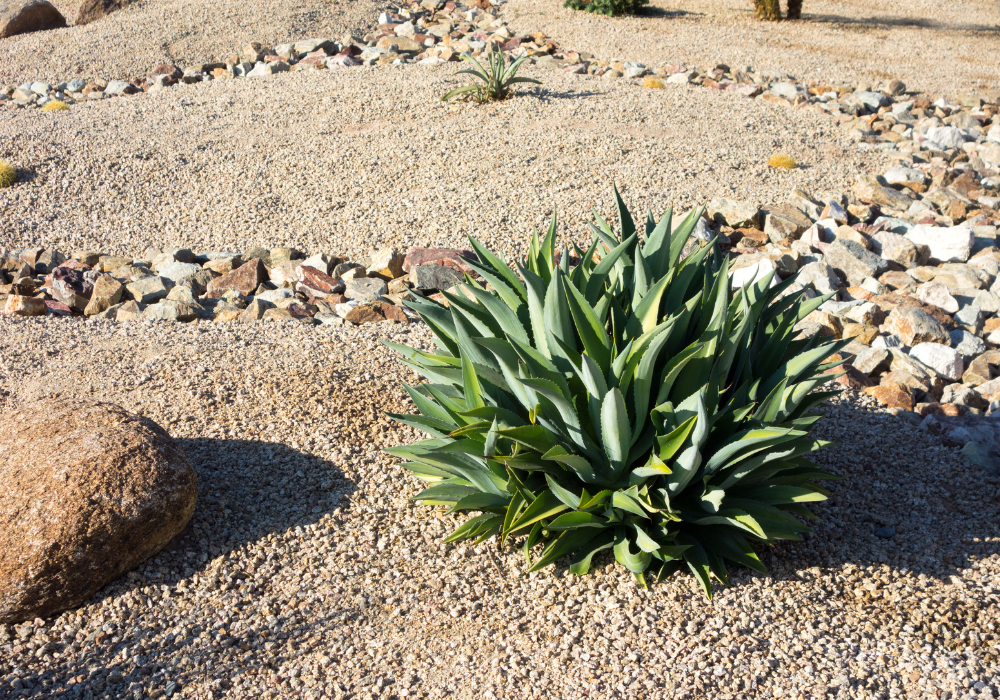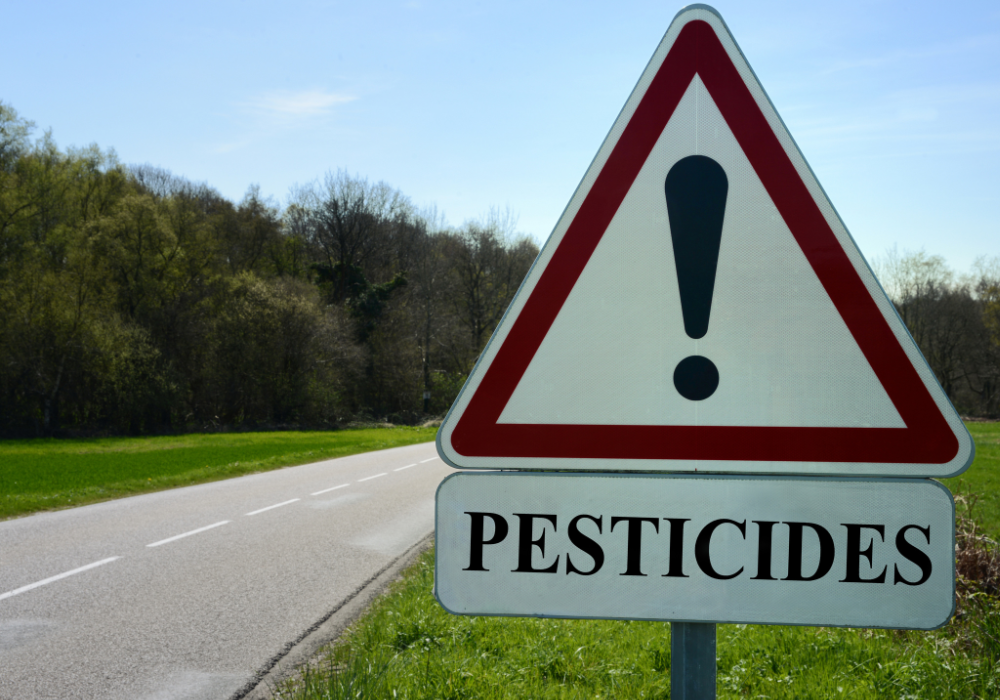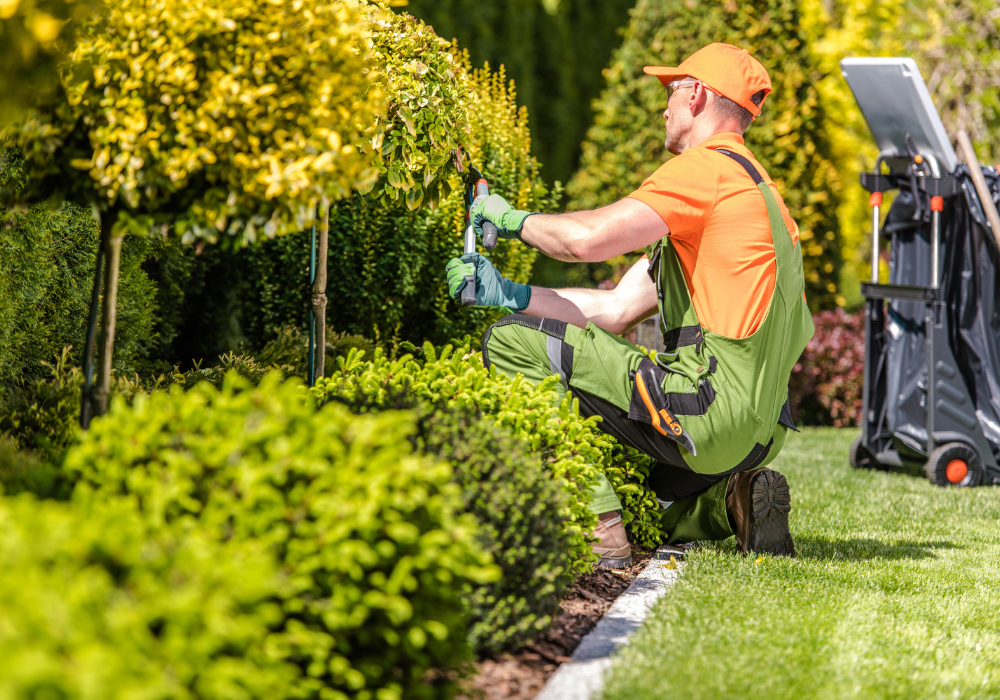What Are the Environmental Benefits of Green Landscaping?
By Randy Breneman on Thursday, July 21, 2022A Deep Dive Into an Increasingly Popular Way to Go Green
As individuals, businesses, and even whole cities strive to become more environmentally friendly, green landscaping is becoming an increasingly popular way to accomplish this goal.
Keep reading to learn more about what green landscaping is and how you can get started on your project!
What Is Green Landscaping?
Green landscaping, also known as sustainable or eco-landscaping, is a method used to design, create, and maintain your landscape. By using this approach you can save time, money, and energy (among many other things). It encompasses a wide range of activities, from designing and planting gardens to managing larger parks and estates.
In recent years, there has been an increasing focus on sustainability in landscaping, with many designers looking for ways to reduce the environmental impact of their work.
One approach that has gained popularity is green landscaping. Green landscapers seek to use native plants and materials that are sustainable and eco-friendly. They also often incorporate features such as rain gardens and permeable paving, which help to reduce runoff and minimize the impact of development on the environment.
By using these and other strategies, green landscapers can create landscapes that are both beautiful and sustainable.
The Benefits of Green Landscaping
Green landscaping has many upsides, both for you and the environment. Here are some key benefits:
- Improves mental and physical health: Studies have shown that spending time in nature can improve your mental health. Green landscapes provide a place for you to relax and de-stress. Green landscaping is also great for your physical health. It can help you stay fit by providing opportunities for exercise, such as walking.
- Provides habitat for wildlife: Green landscapes provide habitat for many different types of wildlife. By creating a green landscape, you are helping to support the local ecosystem.
- Aids in stormwater management: Green landscapes help to reduce runoff and prevent erosion by allowing water to seep back into the ground.
- Lowers energy costs: Green landscaping can help lower your energy costs by providing shade in the summer and windbreaks in the winter.
- Reduces pollution: Green landscaping reduces air, water, and soil pollution by using natural methods to filter these pollutants.
- Conserves resources: Green landscaping conserves water, energy, and other valuable resources.
As you can see, green landscaping has many benefits. It is important for our environment, our health, and a great way to make a difference.
How to Get Started with Green Landscaping
Green Landscaping is a great way to make your home more sustainable and decrease your environmental impact. Here are a few tips to get started:
1. Evaluate your current landscape. Take note of the areas that get the most sun and shade throughout the day. This will help you determine what plants will thrive in each area.
2. Choose native plants. Native plants are better adapted to your local climate and soil conditions. They require less water, fertilizer, and pesticides to survive, making them a more sustainable option.
3. Incorporate mulch into your landscape. Mulch helps retain moisture in the soil, reduces weed growth, and prevents soil erosion. It can also be used as a decorative element in your landscape.
4. Consider rainwater harvesting. Collecting rainwater can help reduce your water bill and minimize the amount of water you use from municipal sources. Rainwater can be used to water plants, wash cars, or even fill pools and Jacuzzis.
5. Use green landscaping products and practices. Look for products made from recycled materials, such as recycled plastic landscape edging or composite decking made from recycled plastic lumber. Avoid using pesticides and herbicides, opt for organic fertilizers, and try using alternative landscaping practices, such as xeriscaping.
Green Landscaping Techniques
There are many different techniques you can use to create a green landscape. Here are a few:
- Replace your lawn with native plants: Lawns require a lot of water, fertilizer, and pesticides. Consider replacing your lawn with native plants. Native plants are adapted to your local climate and require less maintenance.
- Create a rain garden: A rain garden is a garden that is designed to absorb runoff from rainfall. Rain gardens help to reduce erosion and protect water quality.
- Use organic methods such as composting to fertilize your plants or water your plants with a soaker hose or drip irrigation system to reduce runoff.
- Install a Green Roof: Green roofs are roofs that are covered with vegetation. Green roofs provide insulation, reduce energy costs, and improve air quality.
- Compost: Composting is a great way to recycle organic waste into a nutrient-rich soil amendment. Composting reduces the amount of waste sent to landfills and helps to improve the quality of your soil.
- Plant a tree: Trees provide many benefits, including shade, oxygen, and habitat for wildlife. They can also help to reduce your energy costs.
By following these techniques, you can garden in an eco-friendly way that benefits both you and the environment!
Xeriscaping

Xeriscaping is a common landscaping practice for drought-prone states. At the most basic level, a xeriscape is a landscape designed to use as little water as possible. You might think xeriscaping is unnecessary in places such as Columbus, but as climate change gets more severe, drought conditions in Ohio are possible.
Xeriscaping is a type of green landscaping that is designed mainly for dry climates. It requires little to no irrigation and can help to reduce your water usage and save you money. So if you live in a dry climate, consider xeriscaping your landscape.
Reduce or Avoid Chemicals

Many chemicals used in landscaping, such as pesticides and fertilizers, can be harmful to the environment. Pesticides can pollute waterways and kill beneficial insects. Fertilizers can runoff into lakes and streams, causing algae blooms.
You can reduce your use of chemicals by using organic methods such as composting. If you must use chemicals, try to use less toxic products whenever possible.
You can also take steps to reduce runoff by applying chemicals only when necessary and watering with a soaker hose or drip irrigation system.
Green Lawn Care Tips
Here are a few tips to help you take better care of your lawn in an eco-friendly way.
Grass Clippings
You can use lawn clippings as a natural fertilizer for your landscape. Simply leave the clippings on your lawn after mowing. The clippings will decompose and release nutrients into the soil, fertilizing your plants. You can also compost lawn clippings to create nutrient-rich compost for your landscape. Either way, you’ll be providing valuable nutrients for your plants!
Bioswales
Bioswales are landscape features that are used to filter stormwater runoff. They are usually planted with native plants and grasses, which help to absorb water and prevent erosion. Bioswales can be used in residential or commercial landscapes.
Sustainability

Landscaping plays an important role in supporting sustainability. By definition, sustainability is the practice of meeting the needs of the present generation without compromising the ability of future generations to meet their own needs.
In other words, it is a way of living that preserves our planet and its resources for future generations. One way to achieve sustainability is through green landscaping.
This approach not only helps to preserve our natural resources, but also provides numerous other benefits, such as reducing greenhouse gas emissions, improving air quality, and creating habitat for wildlife. As we work to create a more sustainable world, green landscaping will play an increasingly important role.
Permeable Pavement
As green landscaping becomes more popular, more and more homeowners are looking for ways to include environmentally-friendly features in their yards.
One of the most popular options is permeable pavement, which is a type of pavement that allows water to pass through it. This helps to reduce runoff and prevent flooding. Permeable pavement is made from materials such as concrete, asphalt, or stone. It can be used for driveways, sidewalks, patios, and more.
Permeable pavement is a great way to Green your landscape. Allowing rainwater to seep through the surface, reduces runoff and helps keep our water clean. In addition, it can help cool the air by absorbing sunlight.
If you’re looking for a way to reduce runoff and prevent flooding, the permeable pavement may be the solution.
LEED Certification (Leadership in Energy and Environmental Design)
Landscaping for sustainability has many benefits including reducing resource consumption, minimizing waste, and lessening the impact of development on ecosystems.
Landscaping that is sustainably designed and managed can also help to mitigate the effects of climate change. One way to demonstrate a commitment to sustainable landscaping is to pursue LEED certification.
The Leadership in Energy and Environmental Design (LEED) green building rating system is a voluntary, points-based system for assessing the environmental performance of a building or landscape.
Projects can achieve one of four LEED rating levels: certified, silver, gold, or platinum. To earn LEED certification, a project must earn a certain number of points across several categories, including water efficiency, energy use, materials and resources, and indoor environmental quality.
Achieving LEED certification demonstrates that a landscape has been designed and built using best practices for sustainability.
In addition to the environmental benefits, sustainable landscapes can also offer economic advantages. For example, they can help to reduce operating costs by improving energy efficiency and water conservation. They can also improve the health and well-being of occupants by providing opportunities for contact with nature and promoting active living.
EPA Info
The EPA has many resources available to help you learn about ways to go green. Their website has a Green Landscaping page with information on the benefits of green landscaping, how to get started, and more.
If you’re looking for ways to learn more about green landscaping, be sure to check out the EPA’s website. You’ll find lots of great information on the benefits of green landscaping and how to get started. You can also apply for a grant through the EPA’s Green Landscaping Grant program that provides funding for projects that improve environmental quality.
Other Ways to Reduce Carbon Footprint
If you’re looking for ways to reduce your carbon footprint, one of the best things you can do is drive less. Consider walking, biking, or taking public transportation when possible. If you must drive, try carpooling or using a hybrid or electric vehicle. You can also reduce your fuel consumption by driving slower and more smoothly.
By reducing your fuel emissions, you are helping to improve air quality and combat climate change. Try to use these methods whenever possible. Every little bit helps!
Conclusion
So, what is green landscaping? In a nutshell, green landscaping is the use of plants and natural elements to create an environmentally friendly outdoor space. There are many benefits to green landscaping, from reducing your carbon footprint to improving air quality.
With a few simple changes, you can start enjoying all the benefits of green landscaping in your backyard. Here at Smart Service, we offer the field service industry the opportunity to throw out the paper and go digital. Just one more way we can go green. If you have a business trying to go greener and want to streamline everyday work processes, try a free demo of Smart Service software today!


